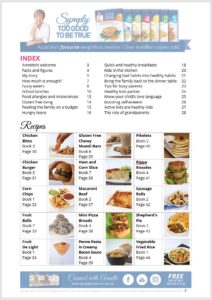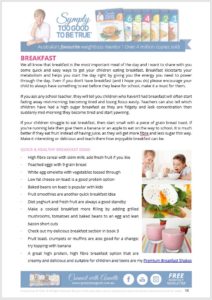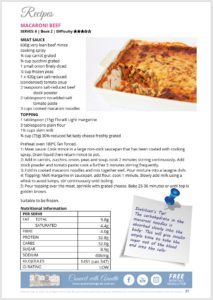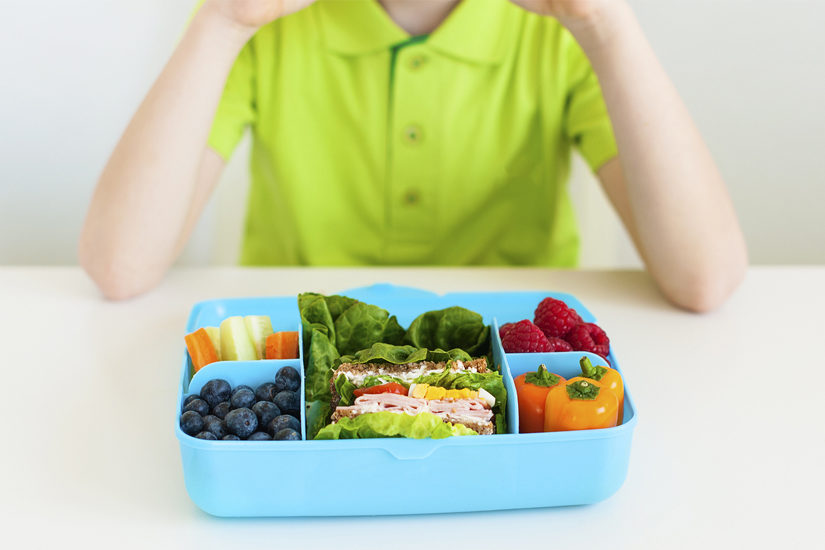As a parent it can be hard to encourage kids to eat healthy food, especially when unhealthy choices are so blatantly marketed directly to them. It may seem easier to just give in when kids ask for the unhealthy food advertised, but as with everything in life there are consequences if you take the easy way out.
Here’s 6 disturbing facts about children’s health in Australia
- 25% of Australian children are either overweight or obese*, with the proportion increasing, particularly since the mid 1980’s.
- Overweight and obesity place children at greater risk of long-term health and psycho-social problems.
- In 2014-15, 68% of children aged 2-18 years met the guidelines for recommended daily serves of fruit, while 5% met the guidelines for serves of vegetables. Only one in twenty (5%) children met both guidelines.*
- Australian children are consuming more than the recommended dietary intake of sugar and saturated fat.
- Australian children are also exceeding the maximum limit of screen time guidelines (watching TV & playing games); which is producing a sedentary lifestyle.
- Overweight or obese children are more likely to remain obese as adolescents and become overweight or obese as adults. About 80% of obese adolescents will become obese adults.
So what’s the solution?
Well, firstly, I’m never going to suggest you put your child on a diet. What I will ask is that you provide them with healthy food options more often than unhealthy options. The key is don’t try to change everything at once, make gradual changes by offering more of the healthy food and less junk. Notice their likes and dislikes and use this to your advantage; for example my girls weren’t keen on veggies but they loved my Vegetable Fried Rice. Every healthy addition to their regular food intake is a bonus and remember you are the boss don’t let them dictate to you.
Here’s some suggestions to get started
- Make water their go-to drink – avoid sugary drinks at all costs
- Avoid or limit takeaway food – these are high in saturated fat and have little nutritional value
- Keep healthy snacks on hand – some examples include fresh fruit, yoghurt or low salt popcorn
- Lead by example – children mimic what you do
- Monitor their portion sizes – you should see the difference between a child and adult serving
- Get them moving – activity will help them physically and team sport helps develop good social skills
- Limit screen time – if kids are having more screen time than play time it’s time to make changes
I think it goes without saying – healthy kids are happy kids and my eBook of the same name will guide you through the maze of unhealthy food options for kids and help you make the healthiest choices.
Throughout the 45 pages I’ve got you covered with articles on breakfast, lunch and bringing the family back to the dinner table at dinner time. I also talk about managing fussy eaters, healthy kids parties, food allergies, getting them active and so much more.
There’s 15 fabulous recipes the whole family will enjoy – and yes, I’ve smuggled in the veggies… sshhh 🙂
And… in this updated edition I’ve added some new content to assist you even further
- How much is enough? – Find out how much food a child should be consuming based on their age
- Know your child’s love language – Learn how to get even the most difficult child to do the things you want them to do
- Tips for grandparents – Helps parents make the transition to being a grandparent while avoiding some of the common pitfalls



NB: This is a downloadable product (you won’t be sent this in the post). You will receive 2 emails at time of purchase. One email is an invoice, the other email includes a link to download your eBook. If you don’t receive both emails, check your JUNK emails. Be sure to save your eBook to your computer for future reference as online access is limited.
*Statistics obtained from Australian Bureau of Statistics website.
#symply2good

